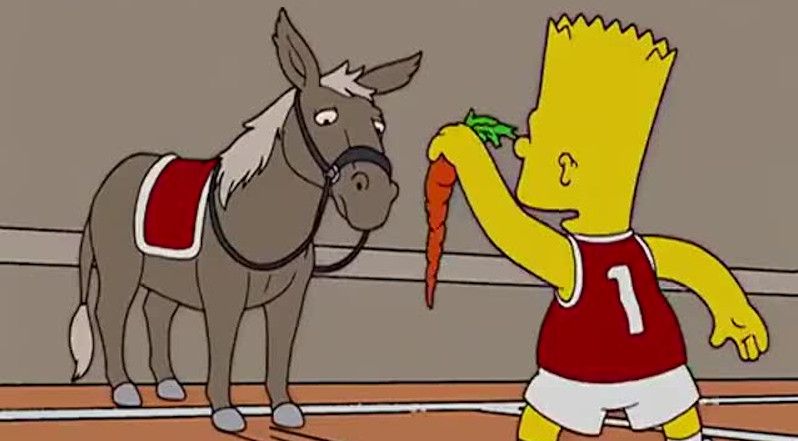The Carrot and the Stick

One of the great things about working at Atlassian is that it's filled with amazing people who are really good at what they do. As a bonus, being surrounded by that much talent often reminds you that you aren't as good as you think you are.
Like how I'm not as good at the people side of management as I thought I was.
Other than the sheer joy of screaming into the void, one of the core value propositions of this blog is to work through whatever is on my mind.
In the last few months, I've written about giving confrontational feedback, emotional detachment as a coping mechanism and setting expectations for others, but there is at least one thing that I haven't talked about yet.
Motivating people.
How's The Engagement?
Anyone who has ever been responsible for people will tell you that they are complicated creatures.
What motivates one person might discourage another and that sort of thing is never obvious ahead of time. The longer you spend working with someone, the more you understand them and how they tick, which can help in knowing how to motivate them.
But that takes time and things still need to get delivered.
When you're in that period of discovery, like when you're new in a team or still trying to build a relationship with someone, you can fall back on a classic motivational model:
The carrot and the stick.
This Whole Morning Has Been Wonderful!
The carrot part of the model is about rewards.
It's about encouraging people to do the right thing by ensuring that whenever they do, they get some sort of tangible benefit or advantage.
But first you have to identify what the right thing is. What sort of behaviour or outcome you want to encourage with your carrot.
This can take the form of a goal (delivering a piece of functionality), or perhaps a set of guiding principles or values that people should align to (like ensuring that no pull-request has a cycle time of greater than 3 days). Regardless of what it is, it's important to be clear about what the rules of the game are, so that people know what is going to be rewarded.
There are three obvious carrots:
- compensation
- recognition
- opportunity
Compensation is anything that physically rewards the person for their efforts, like money, gifts or perhaps even something as simple as time-off so that they can rest and relax.
Recognition is more akin to an emotional reward, whereby you congratulate someone on a job well done or call out their accomplishments to those around them. It's a way of increasing their social standing within the group, or even just acknowledging that you appreciate their contributions.
Opportunity is a bit different. It's where you agree to give someone a chance to do or own something in the future, which can potentially be a way to motivate them through a thing that is not aligned to their interests.
But, sometimes the carrot isn't enough...
Too Wonderful...
The stick part of the model is about punishment.
It's about discouraging people from doing things that are not aligned with the values or outcomes that you need.
You have to identify what the wrong thing is and be very clear about it. People need to understand what sort of behaviours or outcomes you need them to avoid.
There are a few obvious sticks:
- criticism
- negative performance reviews
- withholding opportunities
- unpleasant duties
Criticism is negative reinforcement. It doesn't have to be a negative experience per se, but it's when you clearly and unambiguously tell someone that their behaviours or outcomes are unacceptable and why.
Negative performance reviews are only usable when you have some sort of pre-existing performance management framework. Generally, these sorts of reviews are tied closely to compensation, so it's a double whammy, because a low rating might lead to real fiscal ramifications.
Withholding opportunities is where you specifically restrict a person from an opportunity that they are interested in. This is a mechanism of helping them to understand that their previous behaviours or results were not acceptable, and that there are ramifications to their actions.
Unpleasant duties is where you assign tasks to a person that are necessary, but not enjoyable. This often goes hand in hand with withholding opportunity, and may actually involve a greater lesson of some sort. Think Mr Miyagi telling Daniel-san to wax his cars.
As you can see, none of the things above feel good for the person delivering the beating or the person receiving it.
You goal should be not to punish for the sake of punishment, but to help the person understand that they are doing things that are holding them back and hurting those around them.
It's a difficult line to walk.
Now That Wasn't So Bad, Was it?
If I had to choose between the two elements of the classic model of motivation, I would say that I'm a carrot person. I like to be positive, spending most of my effort on encouraging the good things.
I don't particularly enjoy punishing people, even if it might be necessary. Some of that dislike is because I find confrontation uncomfortable, but some of it is because I just don't like negative reinforcement.
Having said that, I don't particularly enjoy the carrot and stick model anyway.
I want to engineer an environment where people are motivated not through extrinsic means like rewards or punishment, but instead are motivated through an intrinsic desire to do good things and make a difference.
Why not write a blog post about that you might ask?
Because I'm still working on my ability to effectively motivate people in that way.
So instead, you get this.
Member discussion